The Kenyan luxury safari experience
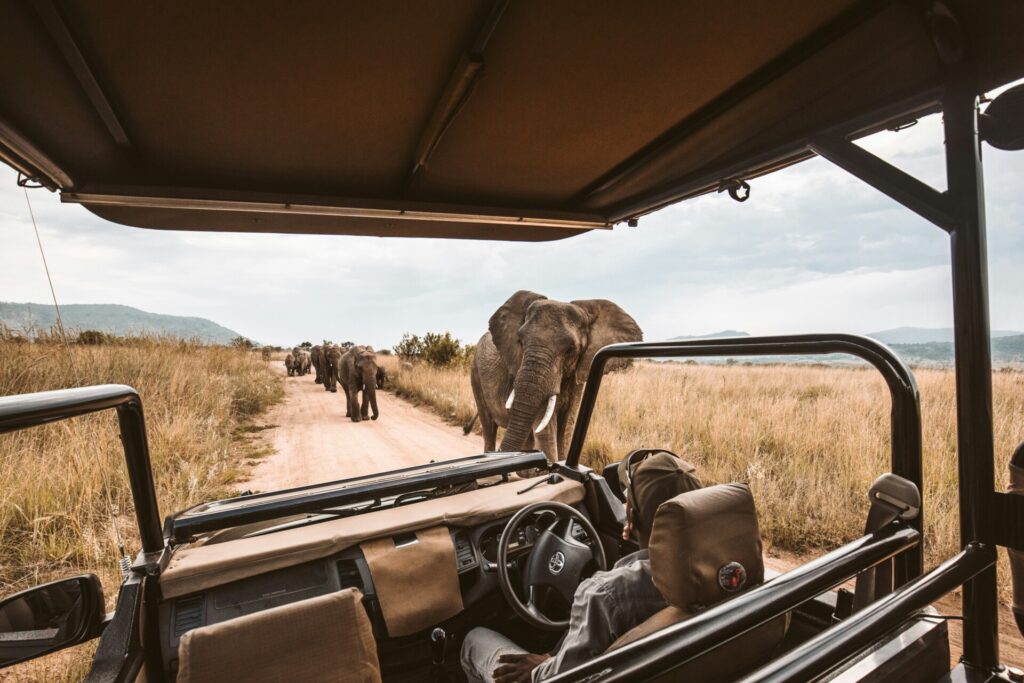
When most tour and travelers think of a Kenyan luxury safari, they picture the iconic Big Five—majestic elephants roaming the savannah, the elusive and endangered Grevy’s zebra, lions tracking their prey under the golden sun, and cheetahs in high-speed pursuit, both by day and during the thrilling nocturnal hunts. Then there are the rhinos, standing as silent sentinels of the wild, and the chimpanzees of Ol Pejeta Sanctuary, a rare and heartwarming sight in the heart of Kenya.
But Kenya offers so much more on luxury safari. Much more beyond these legendary wildlife encounters. From private conservancies offering intimate safari experiences to high-altitude retreats, luxury villas, beach expiriences and cultural immersions with indigenous communities, the Kenyan safari experience is as vast as you can imagine.
The country’s tour and travel landscape shifts with the seasons. Whether you’re visiting during the Great Migration, exploring hidden gems in the green season, or seeking an exclusive off-the-beaten-path adventure, Kenya’s luxury safari experiences extend far beyond the Big Five—each offering a unique way to connect with nature and culture.
Luxury Safari Experiences in Kenya: Beyond the Big Five
1. The Great Migration at the Maasai Mara
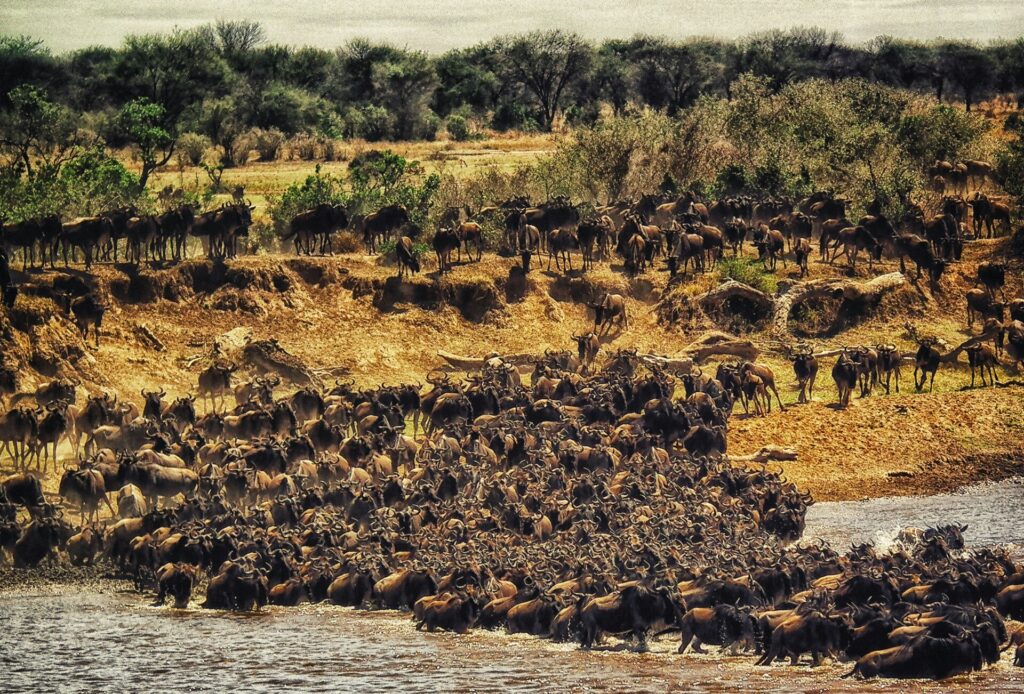
A Front-Row Seat to Nature’s Greatest Spectacle
One of the world’s most spectacular wildlife events, the Great Migration, takes place annually between July and October, when over two million wildebeest, zebras, and gazelles thunder across the Serengeti into the Maasai Mara. This breathtaking journey is a dramatic display of survival as the herds battle raging rivers, hungry crocodiles, and stealthy predators.
To enjoy this natural wonder in privacy and luxury, consider staying at:
- Angama Mara – Perched high above the Mara, offering cinematic views and private game drives.
- Mahali Mzuri – Sir Richard Branson’s exclusive camp in a private conservancy, ensuring intimate wildlife encounters.
- Sanctuary Olonana – An eco-conscious luxury camp set along the Mara River, famous for its immersive game-viewing experiences.
Why visit during the Great Migration?
Apart from witnessing massive river crossings and predator action, the Mara in this season is alive with activity, offering unmatched photographic opportunities and an electrifying safari atmosphere.
2. Ol Pejeta Conservancy
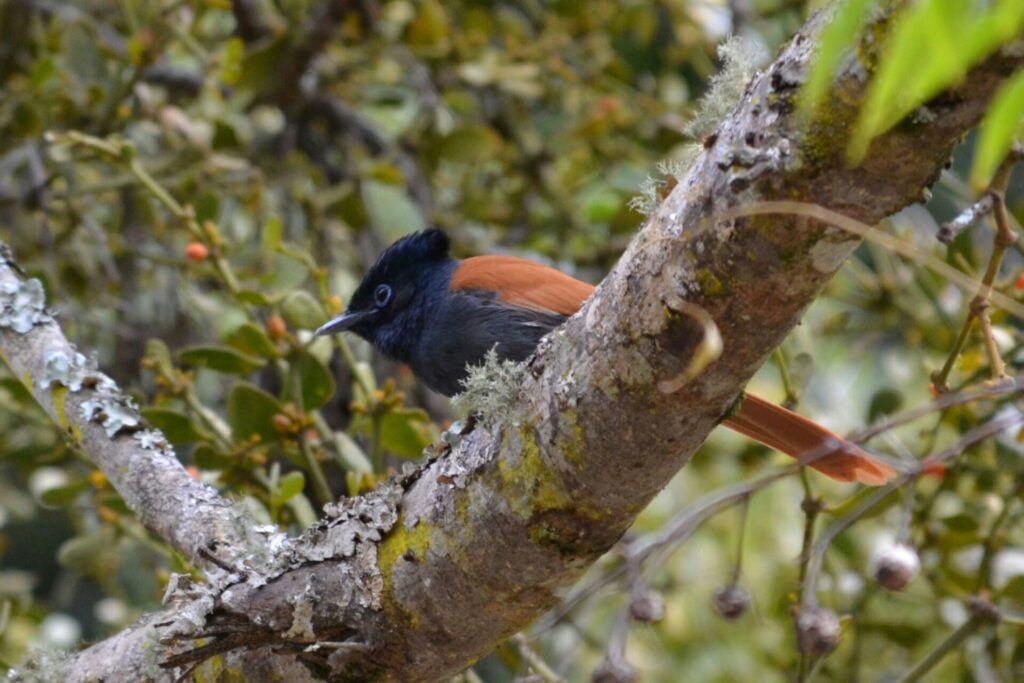
Where Conservation Meets Luxury
Found within Laikipia County, Ol Pejeta Conservancy is more than just a safari destination—it’s a pioneering wildlife sanctuary and home to the last two northern white rhinos on the planet. This 90,000-acre conservancy offers intimate encounters with endangered species, both animals and birds. Unique encounters including a chimpanzee sanctuary, large elephant herds, and some of Kenya’s most elusive big cats.
The best time to visit is June to September, when the dry season brings wildlife closer to watering holes, or December to March, when the lush landscape makes for breathtaking scenery.
For an exclusive stay, check out:
- Ol Pejeta Bush Camp – An intimate and eco-friendly camp offering immersive conservation experiences. Every tourist’s dream.
- Kicheche Laikipia Camp – Located in a private conservancy, perfect for night safaris and walking tours. The perfect escape for individuals and groups.
- Sanctuary Tambarare – A stylish retreat blending luxury with raw wilderness. A haven for travelers.
3. Tsavo East National Park
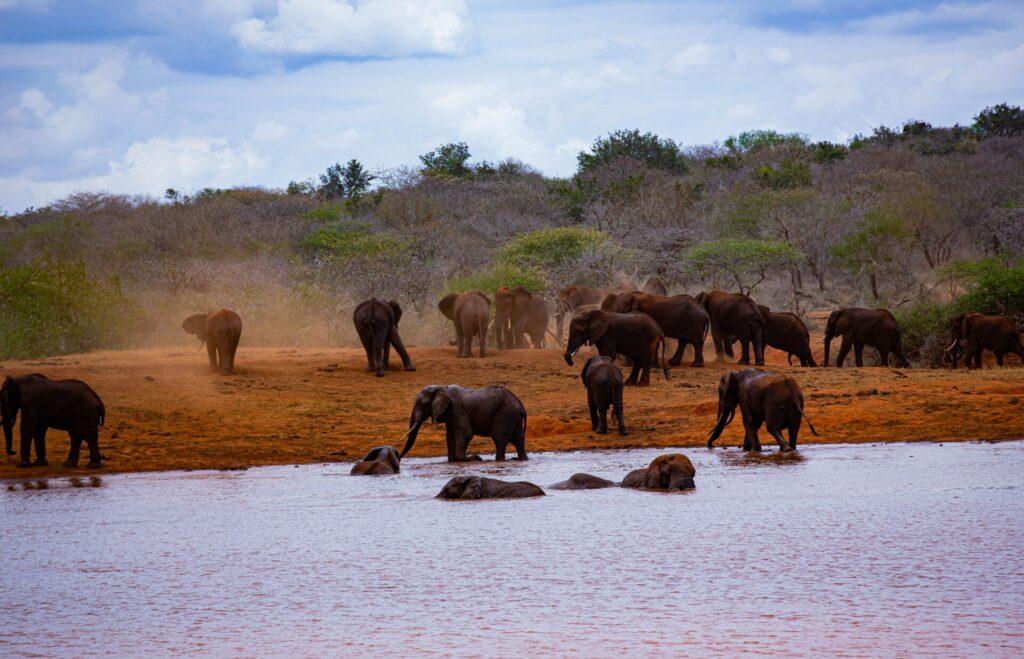
A Safari Through Kenya’s Wildest Frontier
Tsavo East, Kenya’s largest national park, is famous for its red-dust-coated elephants, dramatic landscapes, and unparalleled solitude—making it perfect for those seeking a more exclusive safari experience. The best time to visit is during the dry months (June to October & January to March) when the wildlife is most active around the Galana River and watering holes.
Notable wildlife highlights include:
- The maneless lions of Tsavo, known for their unique and fascinating history.
- Massive herds of red elephants, a striking sight against the park’s semi-arid backdrop.
- Rare antelope species and abundant birdlife for photography enthusiasts.
For a high-end and secluded stay, consider:
- Voi Safari Lodge – Offers panoramic views of Tsavo’s vast plains and a waterhole attracting elephants.
- Satao Tented Camp – A luxurious tented experience in the heart of the wilderness.
- Ashnil Aruba Lodge – Located near Aruba Dam, a hotspot for game viewing.
4. The White Sandy Beaches of Diani
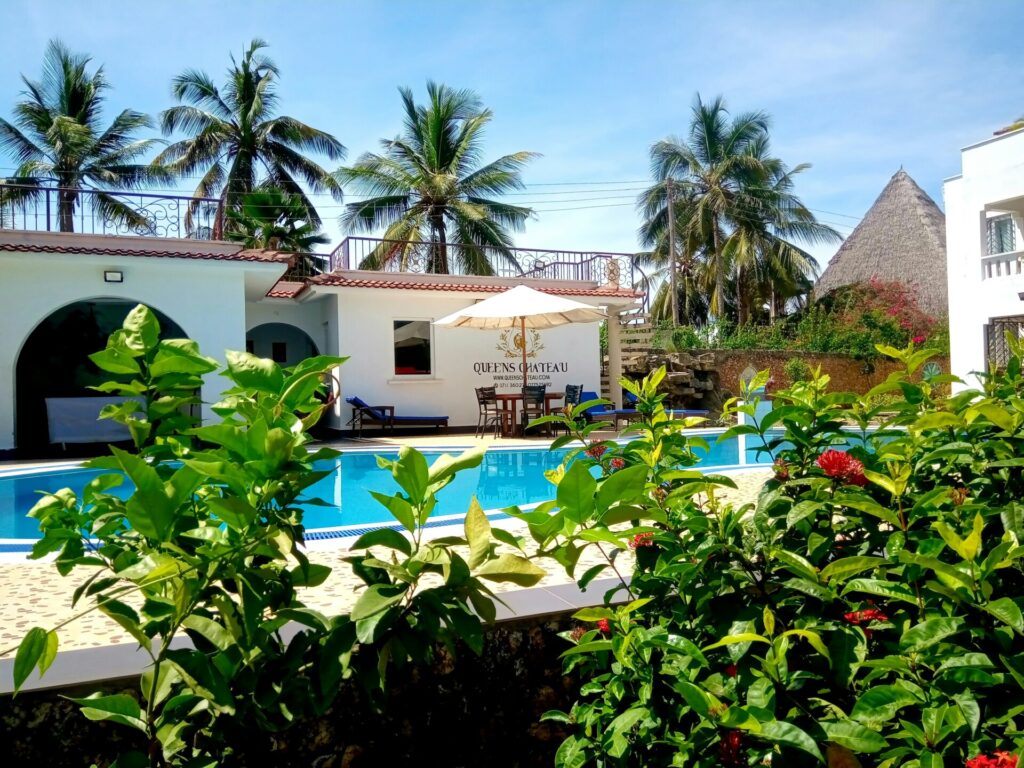
A Coastal Paradise for the Discerning Traveler
Beyond the savannah, Kenya’s South Coast is a haven for luxury and relaxation. Diani Beach, consistently ranked among Africa’s best beaches, boasts powdery white sands, crystal-clear waters, and secluded boutique resorts for a private and indulgent getaway.
Perfect for a year-round retreat, Diani offers a mix of:
- Snorkeling and diving in the vibrant coral reefs of Kisite Marine Park.
- Surfing and kiteboarding, especially between June and September, when the winds are perfect.
- Sunset dhow cruises and canoeing along the River Congo for a serene experience.
For a luxurious and private escape, consider:
- Alfajiri Villas – A celebrity-favorite, offering bespoke service and ultimate exclusivity.
- The Sands at Chale Island – A romantic, eco-friendly island resort perfect for tranquility seekers.
- Swahili Beach Resort – A fusion of Swahili architecture and modern luxury, ideal for a high-end retreat.
Kenya is a treasure trove of exclusive luxury safaris and beach experiences, tailored for those seeking privacy, adventure, and luxury. Whether you’re tracking the Great Migration, encountering endangered species in conservancies, immersing yourself in the wild landscapes of Tsavo, or unwinding along the shores of Diani, there’s a perfect getaway waiting for you.
Kenya experiences distinct tourism seasons based on weather, wildlife patterns, and demand, which significantly impact visitor numbers and pricing.
High Season (July – October, December – February)
This period sees the highest number of tourists, mainly due to favorable weather conditions and peak wildlife experiences.
- July to October is the prime season for safaris, particularly in the Masai Mara, as it coincides with the Great Wildebeest Migration, which attracts thousands of travelers. The dry weather makes wildlife more visible since animals gather around water sources. This is also a great time for visiting Amboseli and Tsavo, as animals are easier to spot.
- December to February is another peak season, especially due to holiday travel. Coastal regions like Mombasa, Diani, and Malindi experience an influx of visitors looking to enjoy Kenya’s beaches. Wildlife parks remain active, and this is also a good time for bird watching, as migratory birds arrive.
- Expect higher rates for accommodations, flights, and park entry fees during these months.
Low Season (March – June, November)
Tourist numbers drop significantly during this period due to rainy weather, but this also means lower prices and fewer crowds.
- March to June marks the long rainy season, making some roads difficult to navigate in game parks. However, lush green landscapes, fewer tourists, and discounted rates make it attractive for budget travelers. Some lodges close during this time, but those that remain open offer great deals.
- November is the short rainy season, and while it still sees fewer tourists, the scenery is stunning as the rains rejuvenate the landscape. Wildlife remains visible, and photography is exceptional due to vibrant greenery and dramatic skies.
- This is the best time for budget travel, with reduced park fees and hotel rates.
What to Look Out for Each Season
- If you want action-packed safaris, visit during the Great Migration (July-October).
- If you prefer fewer crowds and lower prices, travel during the rainy seasons (March – June, November).
- For coastal adventures, the dry months (December – March, July – October) are best, ensuring clear waters for snorkeling and diving.
- For birdwatching, visit between October and March, when migratory birds arrive.
Choosing the right time depends on your budget, crowd preference, and activity interests
Enjoy your Kenyan luxury safari experience!
Follow us for more insights on tour and travel at iWonderlust Africa.
If you found this piece interesting check out out next read: The Rising Trend of Eco-Tourism in Kenya: A Retreat to Nature
